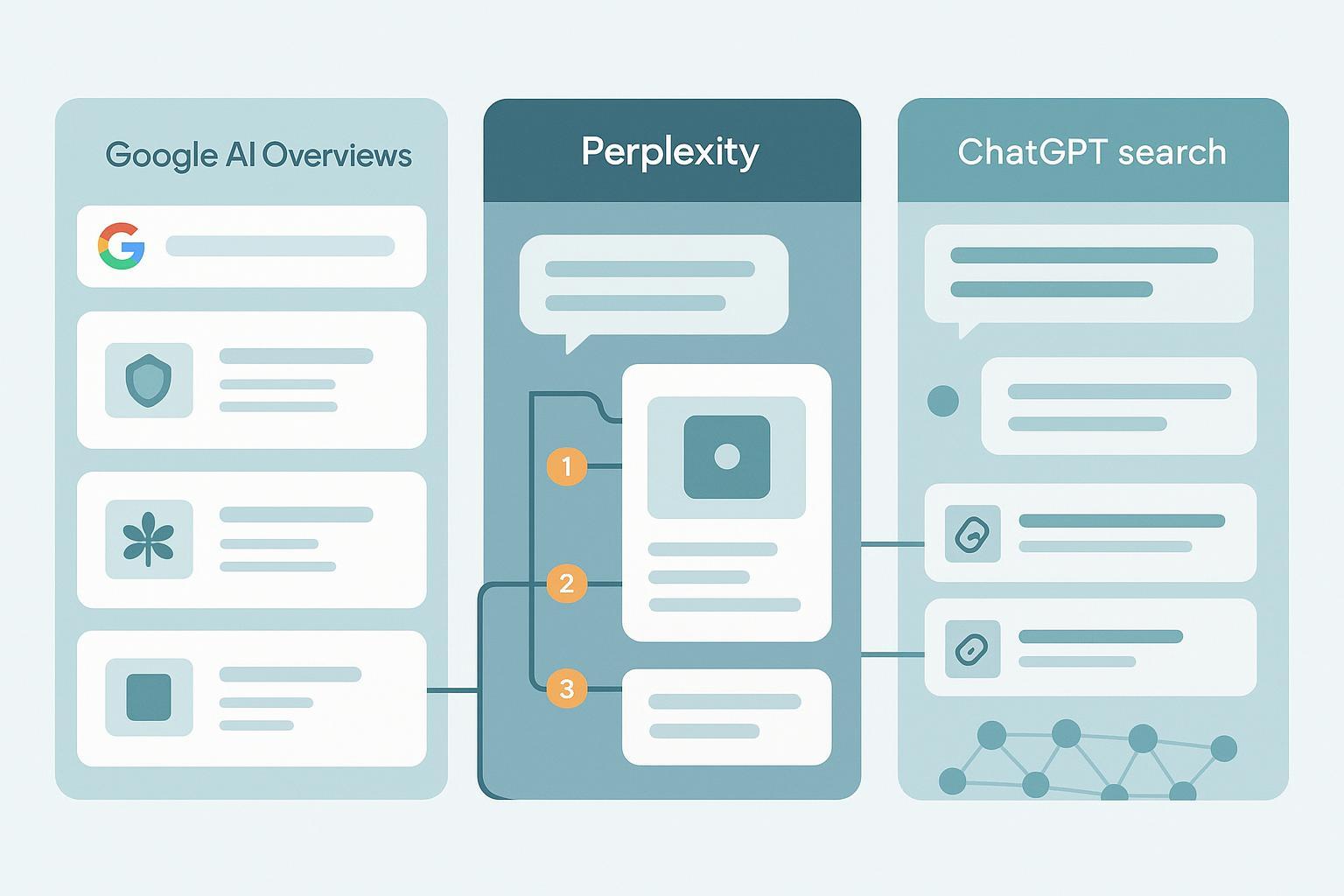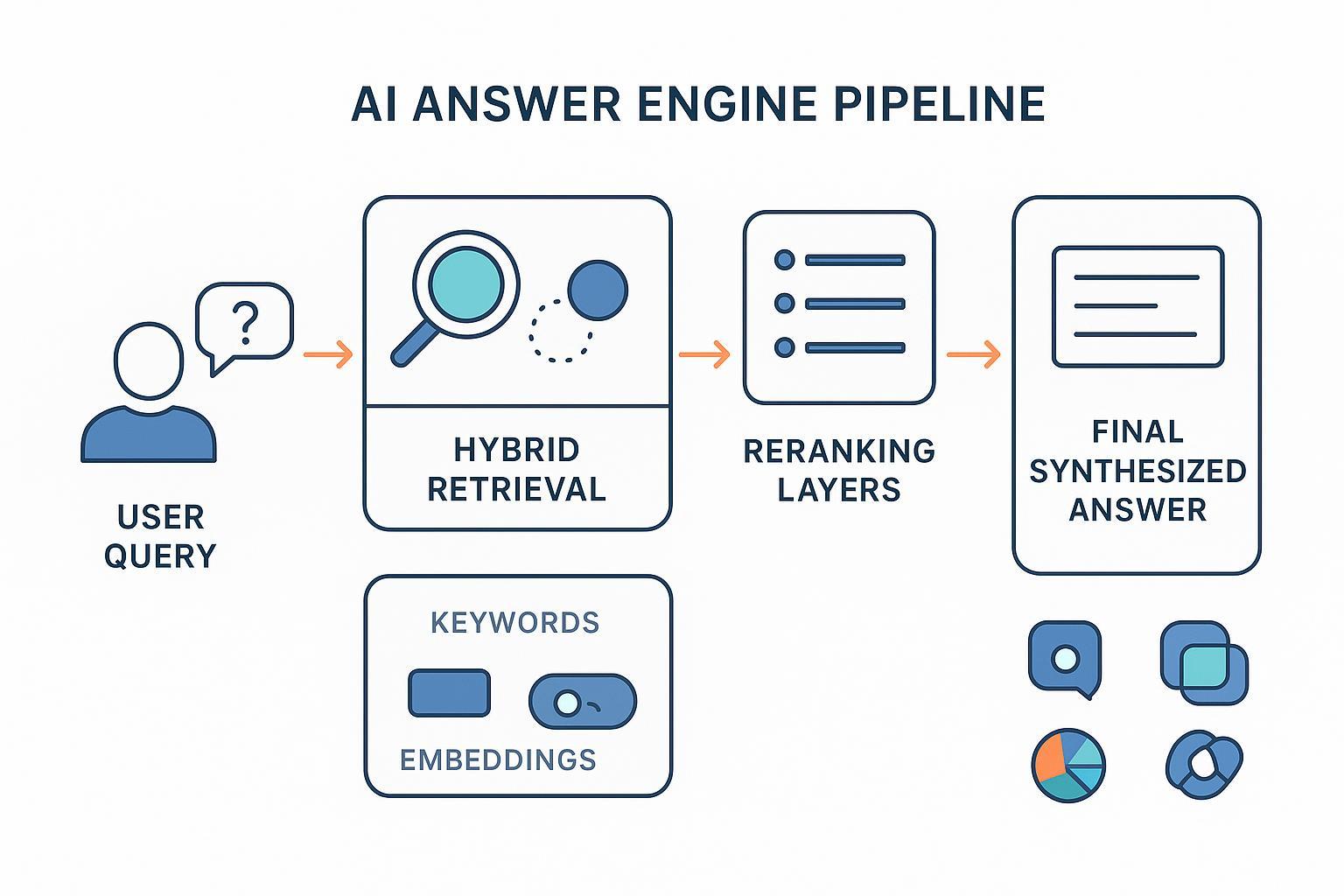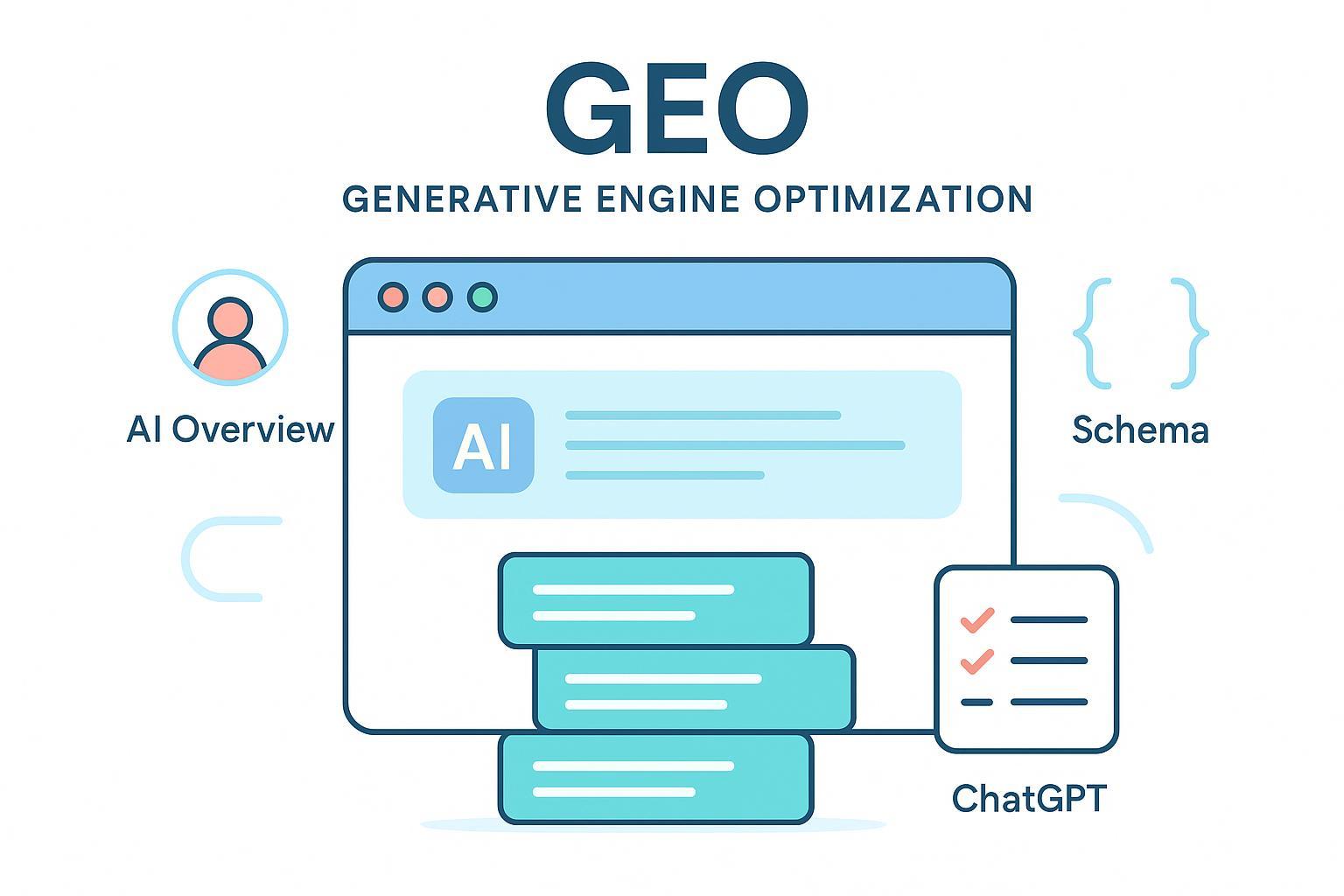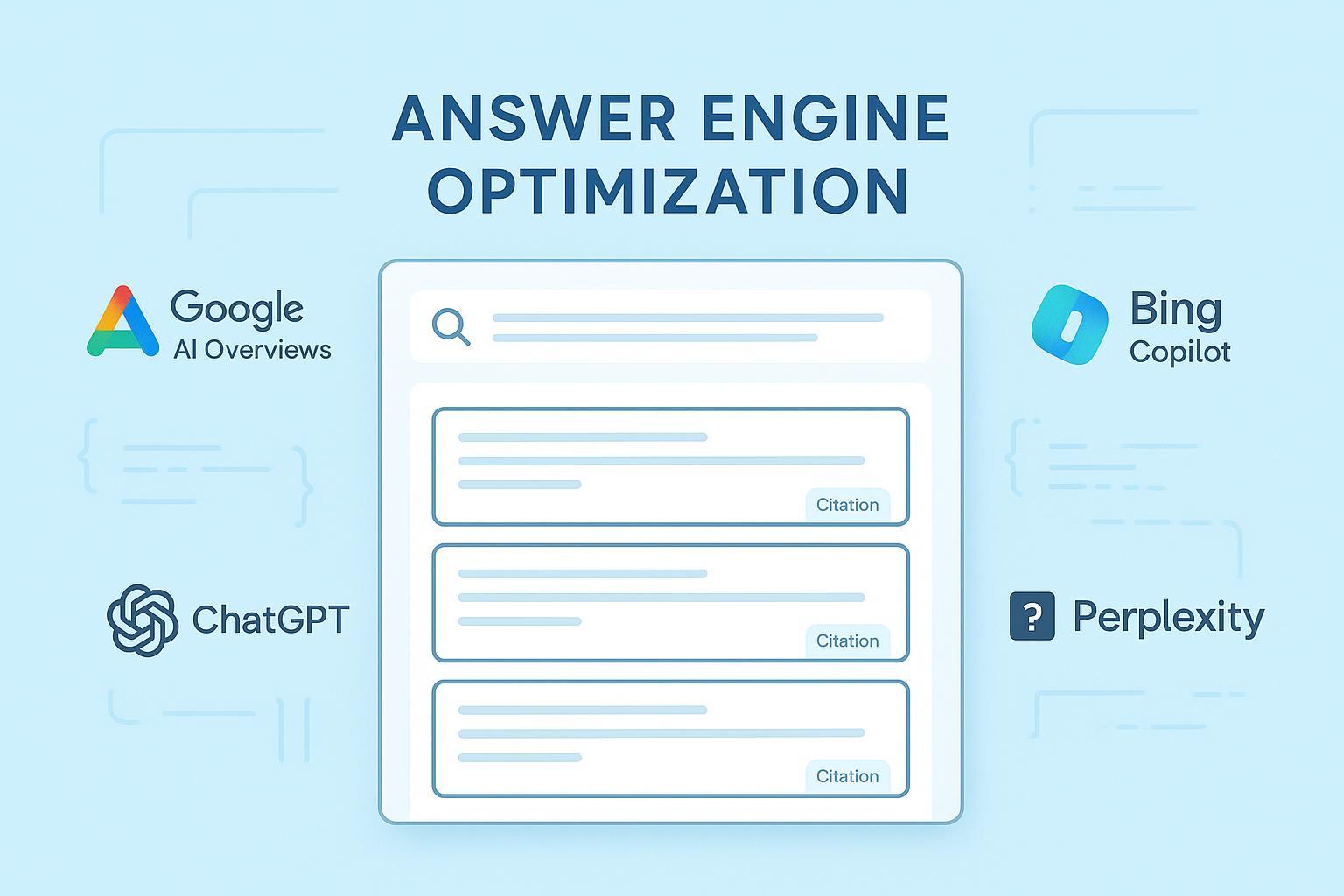Ultimate Guide to Building Topic Clusters for Generative AI Search Authority
Unlock authority in generative AI search results with a complete guide to building topic clusters, entity SEO, and AI engine adaptation. Discover actionable steps, measurement workflows, and platform-specific strategies for Google AI Overviews, Perplexity, ChatGPT, and more. Start optimizing your topical authority today.

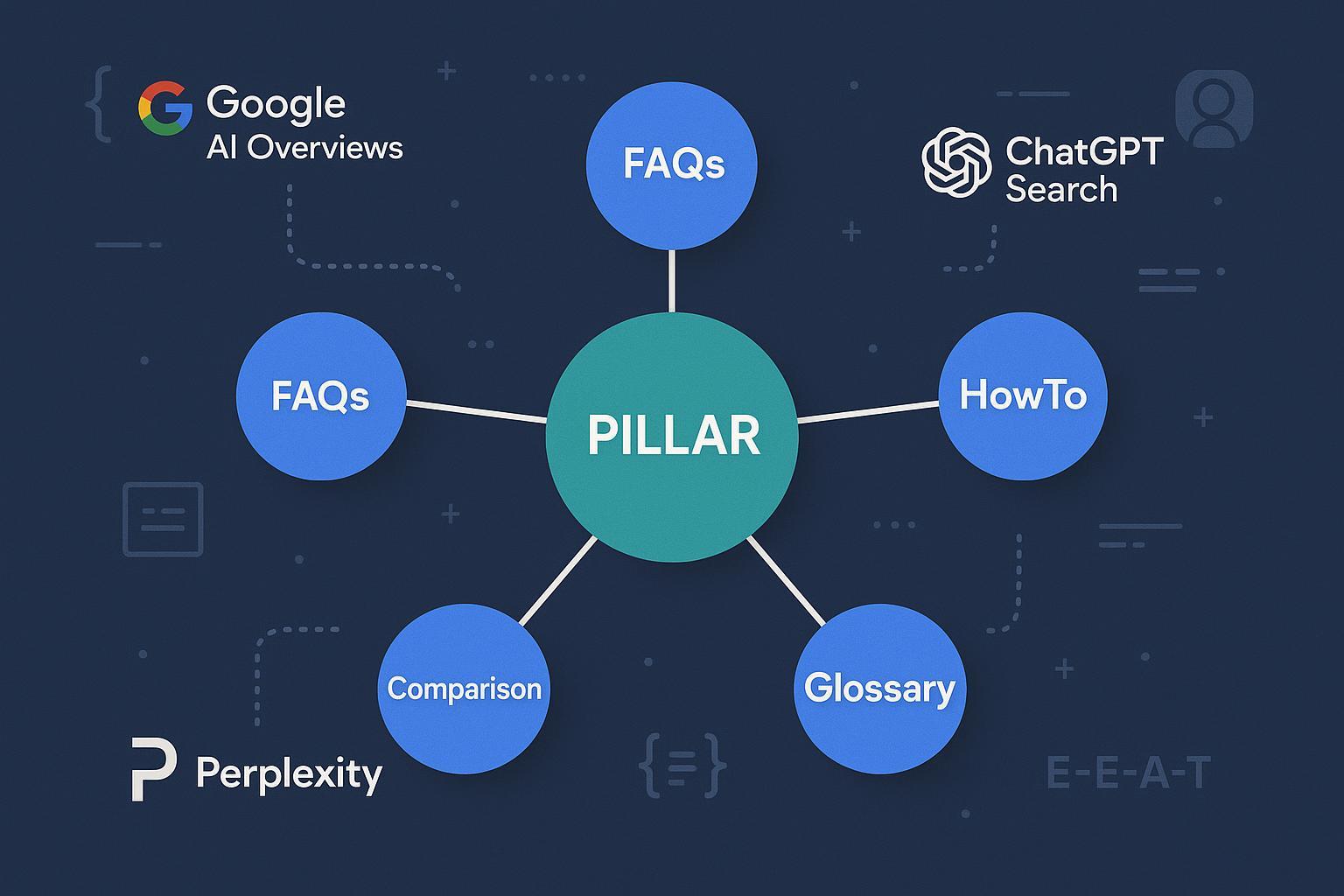
Search is changing fast. Generative AI surfaces—Google’s AI Overviews/AI Mode, Perplexity, and ChatGPT Search—now compile answers from multiple sources, prominently citing pages that are clear, credible, and structurally helpful. If you want your content—and your brand—to be consistently referenced by these systems, topic clusters are your highest‑leverage strategy.
This guide shows you how to build clusters the modern way: entity‑first planning, disciplined internal linking, structured data, E‑E‑A‑T governance, and a measurement loop tailored to AI engines. We’ll keep claims grounded in recent documentation and studies and avoid myths (for instance, there’s no official schema “boost” for AI Overviews).
1) Topic Clusters, Topical Authority, and Why They Matter Now
A topic cluster is a content architecture built around a comprehensive pillar page supported by interlinked cluster pages covering subtopics in depth (FAQs, HowTo, comparisons, glossaries, mistakes, tooling, etc.). Done well, clusters:
- Establish topical authority by covering the breadth and depth of a subject
- Create semantic connections via descriptive internal links
- Offer structured, scannable answers that AI engines can reliably cite
If you need a baseline on pillars and internal linking, authoritative walkthroughs from Backlinko’s pillar pages and internal linking hubs are useful complements to this section: see the guidance in Backlinko pillar pages and the internal linking overview in Backlinko’s internal linking hub (2025 context).
Key principles we’ll use throughout this guide:
- Pillar first, but plan the whole cluster early. Enumerate the subtopics before writing the pillar.
- Each cluster page must stand on its own, with unique value—no thin near‑duplicates.
- Semantic internal links use descriptive anchors (“Entity‑based SEO,” “FAQPage schema”) rather than generic “click here.”
2) How AI Engines Select and Cite Content
Generative AI surfaces combine large language models with retrieval from the open web. Understanding how each platform displays citations helps you tailor clusters for inclusion.
2.1 Google AI Overviews / AI Mode
- Eligibility and documentation: Google’s official guidance (2025) confirms pages cited in AI features follow standard Search eligibility: they must be indexed and eligible to show with a snippet; continue best practices for crawlability, quality content, and accurate structured data that matches visible text. See Google’s developer documentation in Google’s AI features page.
- What not to assume: Google does not state that adding structured data directly increases inclusion likelihood for AI Overviews. Use schema for clarity and consistency, not as a “boost.” This nuance appears in the same 2025 documentation linked above.
- Citation patterns: Industry analyses through 2024–2025 show AI Overviews often cite diverse sources (not just top organic positions) and include deep content pages; average links per overview have increased. See the 2024 recap by SE Ranking in SE Ranking’s AIO research recap and their explainer in SE Ranking’s AI Overviews resource for methodology.
2.2 Perplexity
- Mechanics: Perplexity performs real‑time retrieval and presents explicit citations to source pages, with Focus Modes (Web, Academic, Social, Video, Math/Wolfram) that influence sources. See Perplexity’s help center description in Perplexity’s technical capabilities of threads (2025).
- Optimization signals: Practical guidance suggests clear authorship, visible dates, concise headings/answers, and credible outbound citations help inclusion. For an overview written for practitioners, see LearnPrompting’s Perplexity guide (2025).
2.3 ChatGPT Search
- Retrieval and display: OpenAI confirms ChatGPT Search provides inline citations with a Sources button at the end of responses, linking to the original pages; images include source links; GPT‑4o decides when to fetch live information. See the 2024 announcement in OpenAI’s “Introducing ChatGPT Search” and operational notes in OpenAI Help: ChatGPT Search.
- Implication: AI engines often prefer neutral, high‑authority references. Large citation reviews indicate branded pages are less frequently chosen than encyclopedic/community sources. For comparative patterns across AI search, see 2025 commentary in Profound’s citation patterns analysis (platform comparison).
3) The 8‑Step Topic Cluster Framework for AI Search Authority
This is a repeatable system. If you follow it with discipline and iterate monthly, your odds of citation in AI answers improve without relying on gimmicks.
Step 1: Entity‑First Research and Mapping
- Identify primary entities (brand, products, core topics) and related entities (concepts, standards, organizations, people) using sources like Wikipedia/Wikidata and expert glossaries.
- Disambiguate variants: normalize alternate names (United States/USA/US) and maintain a controlled vocabulary.
- Build a simple knowledge graph sketch linking entities to subtopics and FAQs. For a strategic overview on entity SEO and knowledge graphs, see Search Engine Land’s knowledge graphs primer (2025).
- Tooling perspective: If you use entity extraction tools, cross‑check their outputs with reputable sources. InLinks’ help docs outline an entity‑based SEO workflow in InLinks’ entity guide (2025).
Step 2: Audience Question Mining
- Collect questions from support tickets, sales calls, community forums, People Also Ask, and on‑site search logs.
- Cluster by intent: FAQs (short answers), HowTo (procedural steps), Comparison (A vs B), Mistakes, Glossary.
- Prioritize evergreen questions with demonstrable demand and clear informational intent.
Step 3: Pillar Architecture and Cluster Enumeration
- Draft the pillar outline first: define scope, add sections for key subtopics, and plan “summary answers” in each section.
- Enumerate 12–30 cluster pages. Examples: comprehensive FAQs, detailed how‑tos, comparison matrices, tool roundups, checklists, case studies.
- Add breadcrumb paths and reciprocal links between closely related cluster pages.
Step 4: Brief Templates with E‑E‑A‑T
- Assign authors with credentials; include bios and photos. Use bylines consistently.
- Require citations to authoritative sources in every brief. Favor official documentation and peer‑reviewed or well‑recognized industry reports.
- Structure for question answering: lead with concise summaries; use headings and lists; include dates and last‑updated notes.
- For governance context, 2025 guidance emphasizes author bios and update cadences; see Search Engine Land’s E‑E‑A‑T guide for entity context and Backlinko’s E‑E‑A‑T overview for practical application.
Step 5: Semantic Internal Linking Map
- From the pillar, link to each cluster page using descriptive anchors that match the subtopic’s entity/intent.
- From cluster pages, link back to the pillar and laterally to related clusters (“FAQPage schema,” “HowTo markup,” “Entity disambiguation”).
- Audit quarterly: find orphan pages and fix them; check anchor consistency; ensure breadcrumbs reflect hierarchy. For a practitioner overview of internal linking’s impact, see HawkSEM’s internal linking guide (2025).
Step 6: Schema Markup Plan
Implement JSON‑LD that matches visible content and validate routinely.
- Article: headline, description, datePublished/dateModified, author (Person), and publisher (Organization). See Google’s Article structured data.
- FAQPage: Only when the page is a list of Q&A with a single accepted answer per question. See Google’s FAQPage structured data.
- HowTo: Use when presenting step‑by‑step instructions with tools/supplies. See Schema.org HowTo.
- Person & Organization: Author profiles and organization identity, with sameAs links to authoritative profiles. See Schema.org Person and Schema.org Organization.
Step 7: Publication and Freshness Cadence
- Add “last updated” and change logs to high‑value pages; refresh every 6–12 months (or sooner if facts change).
- For YMYL topics (health/finance), include SME review steps and disclaimers.
- Maintain consistency across bios, schema, and visible metadata.
Step 8: Monitoring and Iteration Loop
- Weekly: Test 50–100 target questions across Google, Perplexity, and ChatGPT Search; record whether your pages are cited and in what context.
- Monthly: Update briefs where competitors are cited; enhance entity alignment, add missing FAQs/HowTos, improve authorship signals.
- KPIs: citation frequency by platform, sentiment of mentions, share of voice, structured data coverage, freshness adherence.
For context on AI Overviews visibility and limitations in Google Search Console as of 2025 (no dedicated filter), see the debunk and explanation in Search Engine Roundtable’s coverage of GSC and AIO.
4) Platform‑Specific Playbooks
Google AI Overviews / AI Mode
- Eligibility baseline: Indexed, crawlable, quality content; accurate structured data that matches visible content. See Google’s AI features documentation.
- Content patterns that help: concise summaries at the top; clear headings; lists/steps; explicit dates; strong bylines and bios; links to authoritative sources.
- Governance: Post‑March 2024 updates, Google increased scrutiny of low‑quality AI‑generated content. For the strategic implications, review the analysis in Animalz’s March 2024 update breakdown and practical remediation patterns in Go Fish Digital’s overview of the March updates.
- Reality check: Schema helps machines understand; it’s not a magic lever for AIO inclusion. Focus on content quality, structure, and alignment with the question.
Perplexity
- Content patterns: Perplexity tends to reward pages with clear authorship, dates, and structured answers; present verifiable citations to authoritative external sources.
- Focus Modes: If your topic has academic or standards‑heavy content, ensure you cite canonical research so Academic mode finds and trusts your content.
- Avoid over‑optimization: Don’t force superficial updates; prioritize genuine clarity and verifiability.
ChatGPT Search
- Content patterns: Aim for concise, self‑contained explanations with links to primary sources; include images with captions where useful.
- Source mix: Because ChatGPT often prefers neutral authorities, pursue third‑party references and explainers (e.g., standards bodies, encyclopedias) to increase indirect visibility.
5) Measurement and KPIs: Building Your AI Visibility Dashboard
What to track across platforms:
- Citation frequency: Are your pages linked in Google AI Overviews supporting links, Perplexity citations, and ChatGPT’s Sources panel?
- Sentiment: Are brand mentions positive, neutral, or negative?
- Share of voice: How often are you cited versus competitors?
- Freshness: What percentage of cluster pages were updated in the past 6–12 months?
- Structured data coverage: How many relevant pages have valid Article/FAQPage/HowTo/Person/Organization schema?
Practical considerations in Google Search Console (GSC):
- As of 2025, there’s no dedicated filter for AI Overviews/AI Mode; AI‑related traffic rolls into general web search data. See the clarification in Search Engine Roundtable’s GSC reporting coverage (2025).
- Proxy approach: Monitor queries with high rankings but unusual CTR patterns; manually verify SERPs where AI Overviews appears; triangulate with external trackers.
For a conceptual foundation linking this dashboard to the discipline of Generative Engine Optimization, read What is Generative Engine Optimization (GEO) and consider how GEO principles shape your monitoring plan.
6) Practical Example: Weekly AI Visibility Monitoring Workflow
Here’s a neutral, replicable workflow you can adopt immediately.
- Assemble a list of 50–100 high‑intent questions across your pillar topic.
- Every week, test them on Google (logged‑out, incognito where possible), Perplexity, and ChatGPT Search.
- Record whether your site is cited, which page was referenced, and the sentiment of any brand mention.
- Identify gaps where competitors are cited. Update brief templates for those cluster pages: add missing FAQs, strengthen how‑to steps, clarify definitions, and improve authorship signals.
- Iterate: push updates and re‑test in 2–4 weeks.
For teams who prefer an integrated tracker that consolidates citations and sentiment across AI engines, tools like Geneo can be used to monitor multi‑platform AI visibility, citation/link references, and brand sentiment over time. Disclosure: Geneo is our product.
7) Advanced Techniques to Increase Citation Likelihood
- Entity salience boosts:
- Use consistent terminology and controlled vocabularies across the cluster.
- Cross‑link entity‑rich pages; ensure bylines and organization schema include authoritative sameAs profiles.
- Structured content variants:
- Expand FAQ sections (where appropriate) and provide HowTo pages with step clarity and tool lists.
- Add comparison pages with feature matrices and pros/cons; cite standards or official docs.
- External authority acquisition:
- Contribute to neutral, high‑authority references (industry standards, community docs) and seek coverage from recognized publications; AI engines often prefer citing these.
- Content integrity:
- Avoid excessive AI‑generated filler; prioritize expert review. Post‑March 2024 updates tightened quality signals, so invest in editorial rigor.
8) Common Pitfalls and Guardrails
- Over‑marking schema: Only mark what’s on the page; don’t add FAQPage to non‑FAQ layouts.
- Thin cluster pages: If a subtopic can’t sustain standalone value, fold it into the pillar.
- Orphan pages: Audit internal links quarterly.
- Ignoring authorship: Missing bios and credentials reduces trust.
- Neglecting freshness: Stale dates and outdated facts lower citation odds.
9) Embedded Checklists and Templates
Use these to structure your work.
-
Cluster planning checklist:
- Define pillar topic; enumerate 12–30 subtopics (FAQs, HowTo, comparisons, mistakes, tools).
- Draft an entity map for each subtopic (primary, related, attributes); disambiguate variants.
- Plan schema (Article + FAQPage/HowTo where applicable); assign authors with credentials.
- Build an internal link map (pillar ↔ clusters; lateral links; breadcrumbs).
-
AI search adaptation checklist:
- Structure content for question answering (clear headings, concise answers, lists/steps).
- Include dates and visible authorship; maintain freshness with update logs.
- Validate schema via Rich Results Test; ensure markup matches visible text.
- Monitor citations weekly; iterate briefs monthly to close gaps.
-
Measurement KPI template (columns): Query • Platform (Google/Perplexity/ChatGPT) • Citation (Y/N) • Source URL • Sentiment (pos/neu/neg) • Notes • Next action.
10) Next Steps
- Put the framework into motion: start with one pillar and 12–20 clusters; implement schema; publish with strong authorship and citations.
- Set your weekly monitoring ritual; build the dashboard and assign owners.
- If you need a consolidated way to track multi‑platform AI citations and brand sentiment while you iterate clusters, explore Geneo for monitoring and reporting. For ongoing strategy insights and updates on generative search, browse the Geneo blog.
References and Further Reading
- Topic clusters and internal linking: Backlinko pillar pages (2025); Backlinko internal linking hub (2025); HawkSEM internal linking guide (2025).
- Google AI Overviews/AI Mode: Google’s AI features documentation (2025); SE Ranking’s AIO research recap (2024); SE Ranking’s AI Overviews resource (2025).
- Perplexity: Perplexity’s threads capabilities (2025); LearnPrompting’s Perplexity guide (2025).
- ChatGPT Search: OpenAI’s announcement (2024); OpenAI Help: ChatGPT Search (2025).
- E‑E‑A‑T and entity context: Backlinko’s E‑E‑A‑T overview (2025).
- GSC/AIO reporting clarification: Search Engine Roundtable’s coverage (2025).
- GEO concept: What is Generative Engine Optimization (GEO) (2025).


